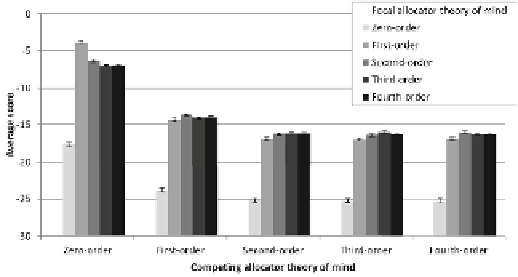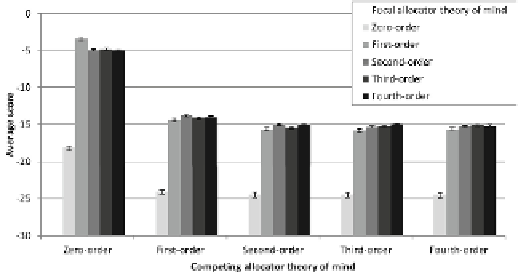Information Technology Reference
In-Depth Information
Fig. 5.
Average scores of iterated best-response agents that differ in their order of
theory of mind over 10,000 initial situations. Brackets indicate standard error.
Fig. 6.
Average scores of agents with utility-proportional beliefs that differ in their
order of theory of mind over 10,000 initial situations. Brackets indicate standard error.
5Rsus
We ran simulations of agents playing the Colored Trails for the two types of
agents described in Section 3.1. The results for the agents who base their beliefs
on iterative best-response are shown in Figure 5, while Figure 6 shows the results
for agents that make use of utility proportional beliefs. Both figures summarize
the average score of a focal allocator in the Colored Trails game as a function
of his order of theory of mind and the order of theory of mind of the competing
allocator. The figures show that, irrespective of the theory of mind ability of
the competing allocator, focal
ToM
1
allocators always score higher than focal
ToM
0
allocators. When the competing allocator is a
ToM
0
agent, the focal
ToM
1
allocator also outperforms focal higher-order theory of mind allocators. Note
that in this case, the focal
ToM
1
allocator's assumption about the theory of
mind abilities of the competing allocator are correct, while higher-order theory
of mind allocators overestimate the competing allocator.




